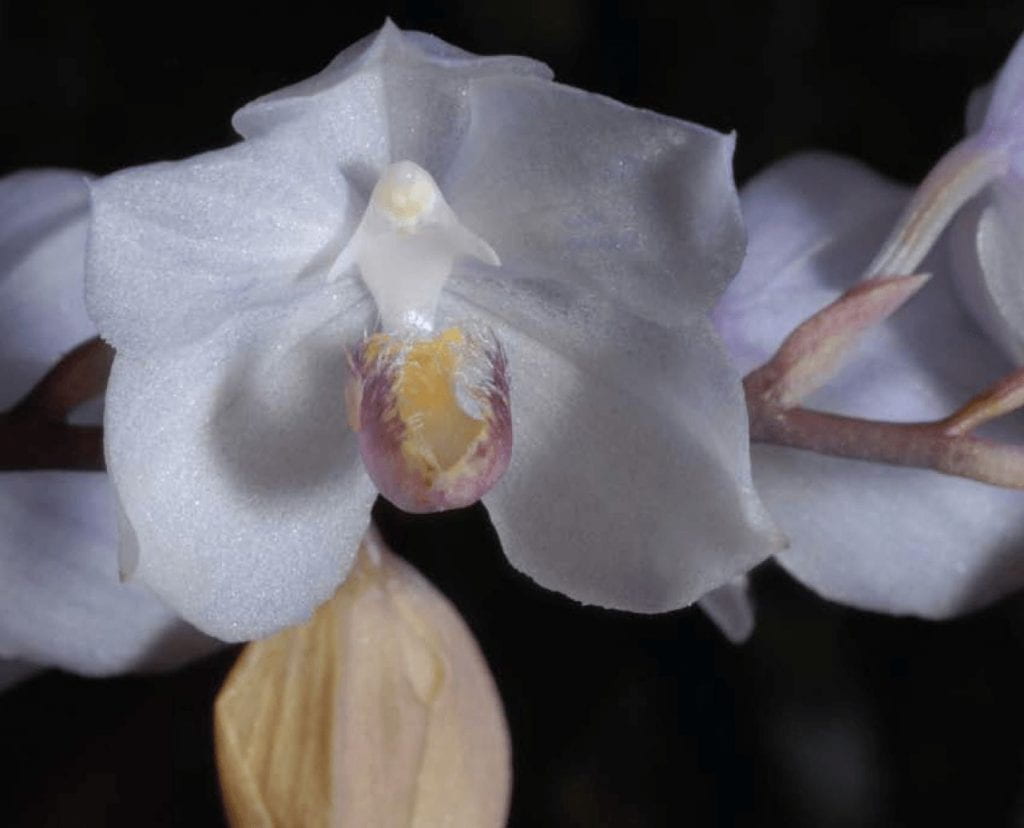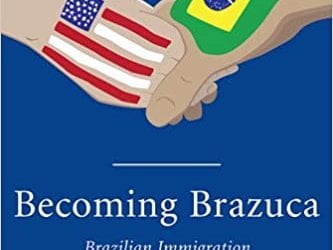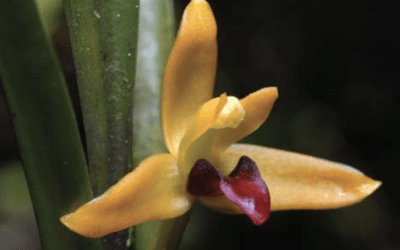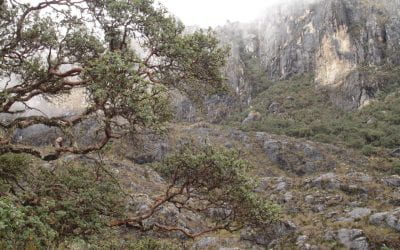Collecting Orchids
In the Venezuelan Orinco-Amazon Interfluvium
Orchidaceae are by far the largest family of all flowering plants, with species occurring all over the planet except in its very coldest and driest habitats. However, as is the case with most other living organisms, orchids are not evenly distributed. Most species grow in the tropics; as we approach the poles, their numbers diminish rapidly. The United States and Canada, for example, have approximately 208 species, Mexico, some 1250 species in about half the combined surface area of the two former countries, and Colombia has more than 4000 species in approximately half the area of Mexico. Ecuador is an even more striking example: there are more than 4000 orchid species in this country that has a little more than 25% of the surface area of Colombia.
Orchids are not uniformly distributed even within the neotropics. Their greatest diversity is found in humid, montane forests between 2600-8200 feet, and the orchid flora of lowland forests has long been regarded as “depauparate.” Do these low counts reflect the actual orchid diversity or merely what collectors have detected? In other words, are there truly fewer orchids in these lowland forests or are they yet to be found? We will address this question using data from research we are presently conducting in southern Venezuela. We are seeking to document every orchid species found in the study area.
In contrast to Colombia and Ecuador, the checklist of Venezuelan orchids currently includes approximately 1500 species and is it not expected to exceed 1600 species. Why? Orchids are particularly diverse in montane forests found along the Andes, where some lineages of Orchidaceae have proliferated (especially subtribe Pleurothallidinae). Colombia and Ecuador are privileged because several mountain chains of this complex cordillera are found within their borders. Venezuela, with barely a small portion of the northern Andes, shares only a fraction of this high orchid diversity. Within Venezuela, the number of orchid species is evenly distributed north and south of the Orinoco River, with the highest diversity found along Andes, the Cordillera de la Costa (and a few other isolated, adjacent mountains such as Sierra de San Luis) to the north and the sides and summits of “tepuis” and “cerros” to the south.
Venezuela south of the Orinoco River, better known as the Venezuelan Guayana, includes three states: Amazonas, Bolívar, and Delta Amacuro, a region that occupies 175,000 square miles, slightly less than half the surface area of the entire country. About 88% of the Venezuelan Guayana drains towards the Orinoco, and the rest drains towards the Río Negro, the largest tributary of the Amazon River.
It is precisely in this small portion of “true” Venezuelan Amazonia (as opposed to Orinoquia) where our study site is located: Municipio Autónomo Maroa. This municipality occupies 5,405 square miles (about the size of Connecticut), has approximately 1,722 inhabitants, and is one of seven such political entities into which Amazonas State is divided. We have concentrated our collecting efforts in the different habitats found along the Yavita-Maroa road, a famous 20 mile portage that communicates the two largest rivers of South America. Yavita is a small village at the northern end of the road, which drains towards the Orinoco; Maroa, the capital of the Municipio Autónomo Maroa, is at the southern end that drains towards the Amazon. The divortium aquarum, the imaginary line that divides the two basins, is found somewhere along the portage.
The trajectory of the road has changed dramatically since it was first reported in the literature in 1779 (by the Jesuit priest Antonio Caulin in his Historia Corográfica Natural y Evangélica de la Nueva Andalucia, on page 76 of the first edition printed in Madrid) and since the famous naturalists Alexander von Humboldt and Aimé Bonpland walked it in May 1800. The road was altered in the early 1800s, some years after Humboldt’s and Bonpland’s visit, and then again in 1978, but all three configurations generally cross the same habitats. Among these habitats are Amazonian savannas (savannas with few shrubs and true grasses but many species of Bromeliaceae, Cyperaceae, Rapateaceae, and Xyridaceae, as well as a fewOrchidaceae); “banas” or shrublands (basically savannas with a high density of small trees and shrubs, where a multitude of epiphytic and a few terrestrial orchids can be found); “caatinga” forest (medium-size forest with a fairly open canopy where, again, some epiphytic and terrestrial orchids can be found); and tall, tierra firme forest (where many epiphytic orchids can be observed, albeit almost always fairly inaccessible in the upper canopy). Except for tierra firme forests that never flood and where soils tend to have some clay, all other habitats are subject to periodical floods and grow on white sand. Among the botanists who have walked and collected along this road were Alfred Wallace, Richard Spruce, John J. Wurdack, and Julian A. Steyermark (along the second road), and more recently, Otto Huber, Paul E. Berry, and Gerardo Aymard (along the third road). In the past five years, our team has conducted collecting expedition also along the northern border of the Municipio (Caño Mesaque and Caño Chimita in the drainage of the Atacavi River, a tributary of the Atabapo River that drains into the Orinoco), east of the road (Temi River, also a tributary of the Atabapo River, including one of its tributaries, Caño Tuameni or Tuamini), south of the road (San Miguel River that drains into the Guainía River), and along the eastern border (Casiquiare channel that, when joining the Guainía, forms the Río Negro).
All available references to the orchids of Venezuela were consulted when we initiated our project in 1989. After an exhaustive search, we found only eight orchid genera and eight species reported for the road and its immediate vicinity. By the time the Flora of the Venezuelan Guayana was published in 2003, reporting 157 genera and 732 species of Orchidaceae, we had already documented, again, solely for the road and its immediate vicinity, some 40 genera and 120 species (the Flora of the Venezuelan Guayana is a monumental, nine-volume work written and edited by an international team of botanists and published by the Missouri Botanical Garden between 1995 and 2005). Currently we have registered for the entire Municipio Autónomo Maroa more than 60 genera and 160 species, only a few of which we have not found along the road. This count includes several new reports for the country (e.g., Peristeria ephippium Rchb.f., described in 1883), one species that was previously known from only one collection (Koellensteinia lilijae Foldats, first collected in 1958 and described in 1961), and at least six new species: Catasetum maröaense G. A. Romero & C. Gómez, C. yavitäense G. A. Romero & C. Gómez, Habenaria sp. Nov., Pleurothallis sandaliorum G. Romero & Carnevali, Sarcoglottis sp. nov., and Stelis bricenorumG. A. Romero & Luer. Flower specimens preserved in alcohol enabled us to accurately draw several species that previously had been incompletely, poorly, or not illustrated at all (e.g. Epidendrum apuahuense Mansf. and E. magnicallosum C. Schweinf.), as well as to correctly identify species or varieties that were misinterpreted in the past (e.g., what had been described in the past as Cleistes Rosea Lindl. var. pallida Carnevali & Ramírez is currently believed to be a new species).
Given the many botanists who had collected along the Yavita-Maroa road, how could such a large number of orchid species have gone unnoticed?
We hypothesize that the answer lies simply in time and space. Most plant collections are just points in time and space. Itinerant plant collectors, including the ones who have traveled from Yavita to Maroa, spend only short periods of time (usually only days) collecting plants in a given habitat, usually not long enough to encompass the flowering time of all orchids found in such a habitat. Since it takes tremendous expertise to identify orchids without flowers, most collectors simply ignore plants that are not in flower. Sometimes indeed they do not detect all of them, since some are quite small and discernable only to the trained eye. Naturally, many species can be overlooked. Our strategy, although time consuming and costly, has been to sample every habitat several times every month of the year, thus maximizing the number of orchids we detect in flower.
A third obvious variable is expertise: knowing, a priori, what microhabitats are suitable for orchids and where to look for particular species has increased significantly the number of orchids we have documented. Likewise, knowing the plants is also important: we can now identify more than 95% of the orchids we find even without flowers: the ones that we cannot identify are either new to the area or a very few that belong to particularly large and complex genera (e.g., Stelis Sw.).
Of course, the same case could be made for other habitats: the orchid diversity of montane forests no doubt would increase if we implemented the same sampling methods we used along the Yavita-Maroa road. But that is not the point: we already knew that montane forests had lots of orchids. The question we wanted to address was whether the low counts in the reported number of lowland orchid species reflected the actual orchid diversity or simply the collectors’ count. Now we have the answer: the low counts are a collecting artifact. There are many more orchids than we had anticipated. We simply have to find them.
Carlos Gómez, at the time of his retirement in August 2002, was supervisor of special services at the Dirección regional de salud, Departamento de Enfermería, Gobernación del Estado Amazonas, Puerto Ayacucho, Estado Amazonas, Venezuela. He is a medic with considerable experience, an avid naturalist, and an astute plant collector. He has a large collection of living orchids at his home in Puerto Ayacucho. He currently is writing an essay on the history of Chiquichique or piassaba harvesting, the fibers extracted from the leaf bases of the palm Leopoldinia piassaba Wallace.
Related Articles
A Review of Becoming Brazuca: Brazilian Immigration to the United States
Trying to define the community of Brazilian descendants who studied at Harvard University between 2001 and 2005, when I attended the college, was a maddening exercise. Some Crimson Brazucas—or Brazilian immigrants in the United States—affiliated with the broader community of Latino immigrants and participated in Concílio Latino or the annual pan-Latin cultural show, Presencia Latina (which I co-founded in 2002) …
Making a Difference: Taking on Tropical Diseases
Harvard School of Public Health (HSPH) students, along with their Brazilian counterparts, spent January studying and devising ways to control two tropical diseases endemic in Brazil: visceral leishmaniasis (VL) and schistosomiasis. During two intensive weeks in Brazil, students explored the epidemiological, biological, and clinical characteristics of selected infectious diseases, as well as the social, cultural, economic, and …
Plants Under Stress in the Tropical High Andes: Learning from Venezuela and Beyond
Tropical mountains are privileged places for ecological studies. Going up and down the slopes, like the ones surrounding my home town of Merida, Venezuela, we may simulate changes in temperature. While moving from one slope to the next or moving along seasonal precipitation gradients, we may study plant responses to water availability. These studies have shed light on identifying possible climate change effects on …





